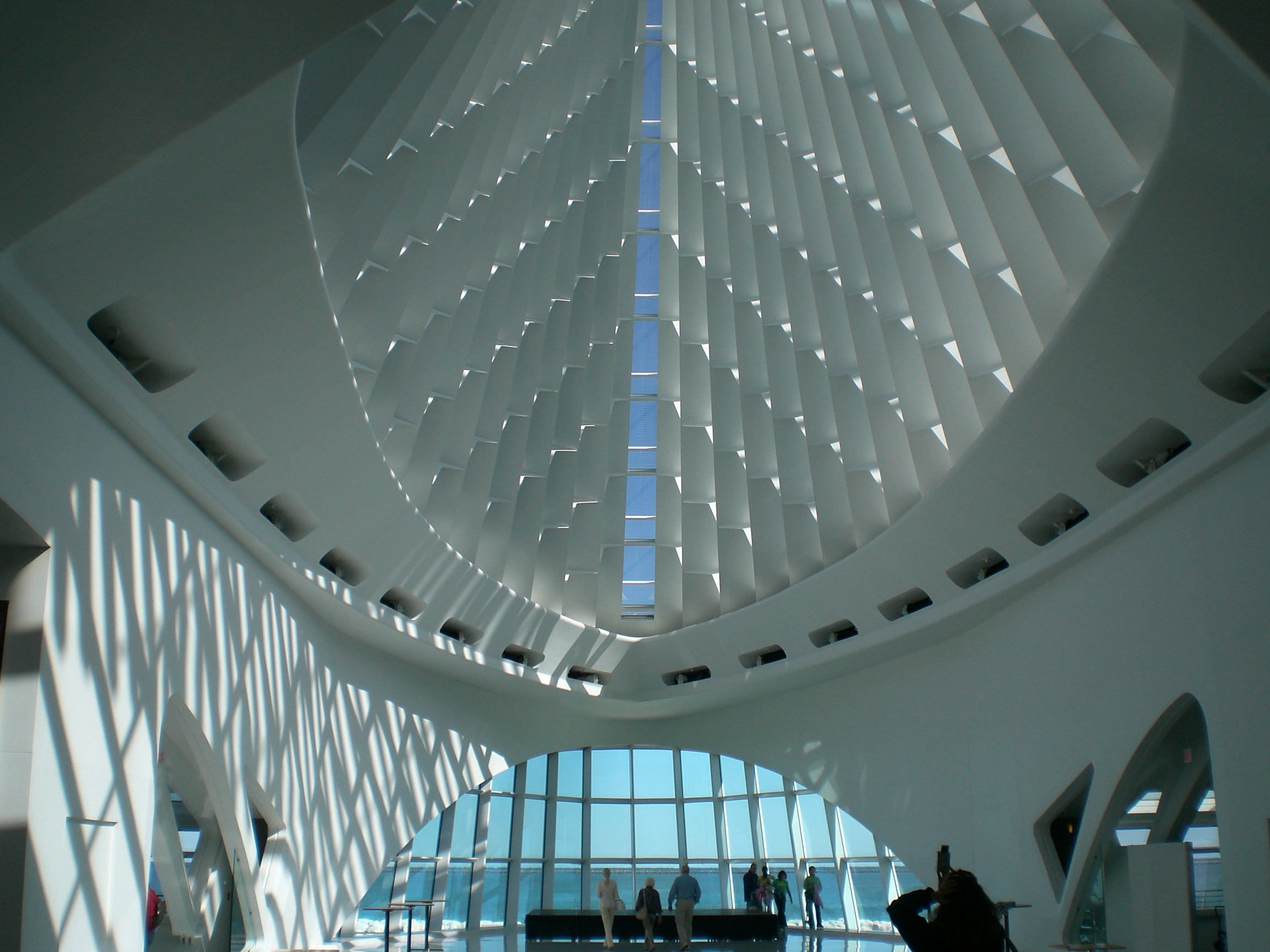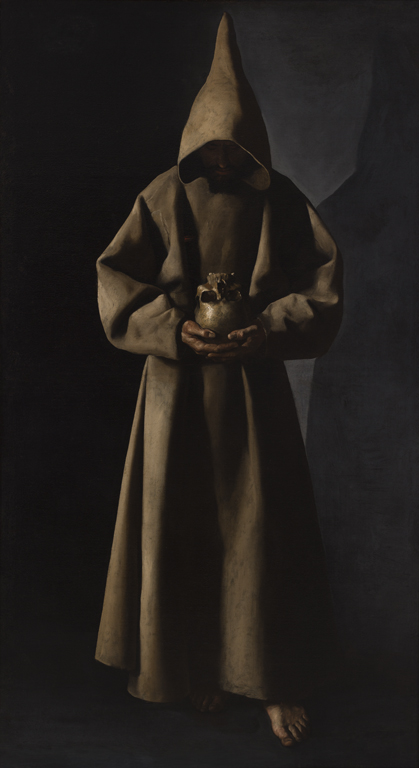Designed by famed Spanish architect, the museum alone is worth a visit to this Midwestern city
Featured Image on post by PeterSesar – Own work, CC BY-SA 4.0, https://commons.wikimedia.org/w/index.php?curid=46973113
Many of us have mixed feelings about the places where we grew up. In my adolescence, I didn’t have many positive feelings about my hometown of Milwaukee, Wisconsin. I had some allegiances to my local sports teams, but I didn’t really appreciate much else about it. When I was a kid, there was often an inferiority complex we exhibited (but didn’t always recognize) about being so close to Chicago, which is a much bigger city. And many people, unfortunately, associated it with mostly unflattering stereotypes and a cannibalistic serial killer.
Of course, now that I’m an adult with a family of my own with parents who are getting older and need more assistance, I enjoy going back home. I think I especially appreciate it because we’ve been living in a small town since 2010. When back in Milwaukee, we have favorite places we like to go, like Miller Park – now officially called American Family Field – to watch a baseball game, and the Milwaukee Public Museum, which makes me feel like a kid on a field trip again. I’ve even learned to like an occasional brewery tour or a visit to the historic Usinger’s Famous Sausage deli. We have our favorite restaurants, too; my kids, for example, love the Safe House, a spy-themed eatery downtown, near the Milwaukee River. And while I feel a bit too old for Milwaukee’s famous Summerfest these days, its cultural festivals in the summer are second to none. Although we usually can’t do everything we would like to, one thing that we (almost) never miss is a quick trip to the Milwaukee lakefront, which includes beaches, walking trails, and beautiful green space where many outdoor events are held throughout the year. However, if there’s one thing that stands out on the Milwaukee lakefront, it’s the Milwaukee Art Museum (MAM), which has led to a renaissance of the city’s culture and, in my opinion, has brought some pride back to the city.
“Not unlike the architecture of Antoni Gaudí in Barcelona, you know a Calatrava when you see it.”
The MAM is quite old, of course, and it has always been a nice museum. It didn’t become a tourist destination for art lovers, however, until the construction of the Quadracci Pavilion addition with its Burke Brise Soleil, which was completed in 2001. The project, designed by Spanish architect Santiago Calatrava, was paid for entirely with private funds. Early construction of the addition began back in 1994, when I was just discovering my affinity for Spanish as a junior in high school. I recall the pride with which my Spanish teachers talked about the significance of this great work being designed by an architect from Valencia, Spain, who was known throughout the world for his innovative constructions, including many bridges, sculptures, and even the Olympic Sports Complex in Athens, Greece. Although Calatrava has done lots of projects in his native Spain, I wouldn’t say that his style is particularly Spanish. During my visits to Spain, at least, I didn’t often (if ever) see architecture that resembles his. If you look at his portfolio, many of his structures have certain things in common, like the predominance of the color white, curved lines, lots of light, etc. I’m not an expert in architecture, by any means, but to me his projects look very modern and even futuristic. Not unlike the architecture of Antoni Gaudí in Barcelona, you know a Calatrava when you see it.

Dsv, CC BY-SA 3.0 http://creativecommons.org/licenses/by-sa/3.0/, via Wikimedia Commons
Outside the Quadracci Pavilion, the project features clean, elegant landscaping, fountains and a pedestrian bridge to downtown; inside you will find the museum’s main entrance, cafés, exhibition space, a store, and huge windows that give a spectacular view of Lake Michigan. A unique feature is the aforementioned Burke Brise Soleil, which is a moveable sunshade that looks like wings in flight. Others have said that it looks like a sailboat. Below is a time-lapse video of the brise soleil:
While the building itself is majestic, the art inside is priceless, too. The permanent collection includes names known around the world, including Andy Warhol, Claude Monet, Claude Pissarro, Gustave Courbet, Kehinde Wiley, Georgia O’Keeffe, etc. Every time period from antiquity to the modern is present here, as is every genre of art, including painting, sculpture, photographs, decorative arts, furniture, glasswork, etc. There is one piece which has special meaning for me. When I was still a young child – sometime in early elementary school – I was there with my family for a visit. This was well before the Calatrava addition, of course. As I strolled around the galleries with my dad, he pointed out a janitor who was resting against a wall and told me to ask him what time it was. Since I was a good boy, I did just that. While the man was ignoring me, my dad started laughing. It took me way too long to realize that the janitor himself was a piece of artwork. (My dad still tells this story every time we go by the museum; I tried this prank on my own son, who is much less gullible than I was at his age.) Much later, I would learn about and appreciate American artist Duane Hanson’s sculptures, but at this young age, I think I acquired a rudimentary understanding of realism; during my doctoral studies I specialized in Spanish literary realism and naturalism, though I still find the “Janitor” to be one of my favorite examples of the genre.

Janitor, 1973
Polyester, fiberglass, and mixed-media
65 1/2 × 28 × 22 in. (166.37 × 71.12 × 55.88 cm)
Gift of Friends of Art M1973.91
Photo credit: John R. Glembin
© Estate of Duane Hanson/Artist Rights Society (ARS), New York
The MAM holds a lot of interest for Hispanophiles, too. A quick glance at the museum’s collection reveals that it owns works by Salvador Dalí, Pablo Picasso, Joan Miró, Joaquín Sorolla, and Francisco de Goya. Unfortunately, it looks like at least some of their works are not currently on view. I’m not sure why that would be, but I would guess that it has something to do with space restrictions. No matter how many additions are made to a museum, they’re still not enough to display all of the thousands of works in its collection, which is a shame. Or it could be that some of these works are shared with other museums. It’s not clear from the museum’s online collection why some works aren’t displayed. I’m sure, though, there must be many more Hispanic artists whose work can be seen regularly at the museum.
“Some people might question why such a stunningly beautiful museum is located in a city like Milwaukee instead of a bigger city.”
One painting by a Spanish master, however, is seemingly always on display at the MAM, which is “Saint Francis of Assisi in His Tomb,” by Francisco de Zurbarán. This is perhaps my favorite painting in the museum’s collection. It’s another work that I remember seeing as a young child. A lot of children, I think, meander around a great art museum without being able to appreciate most of the works; afterwards, they might not be able to talk to you about even one of the works they saw. I’m sure I was that way, too, but Zurbarán’s “Saint Francis…” is an exception for me. I was always drawn to its darkness, not just the dark colors that are so imposing and give a somber feel to the work, but also the dark subject matter. As a kid, I’m sure I was also attracted to Saint Francis’s robes, which make him look like a Jedi knight. As an undergraduate student studying abroad in Madrid, I had the good fortune to be able to take a class at the Universidad Complutense that had a weekly visit to the Museo del Prado, which holds the greatest collection of Spanish Golden Age art in the world. I saw many works by Zurbarán there, but none I liked more than the one on display in my hometown’s art museum. These days, when I teach Golden Age Spanish literature, it’s hard for me not to have this image of Saint Francis in my head; members of Catholic monastic communities who wrote poetry in Spain like Fray Luis de León, Saint John of the Cross, and Saint Teresa of Ávila certainly would’ve admired Saint Francis. Although not a poet, exactly, Saint Ignatius of Loyola comes to mind, too, when I look at this painting, in which Saint Francis holds a skull his hands, obviously contemplating death, a universal theme. (I just discovered that the MAM’s online store includes a link to purchase a printed poster of this work, which I think I’m going to have to do.)

Saint Francis of Assisi in His Tomb, 1630/34
Oil on canvas
80 5/8 × 44 5/8 in. (204.79 × 113.35 cm)
Purchase M1958.70
Photo credit: John R. Glembin
I am so appreciative of the Milwaukee Art Museum, not just for what it has done for all of us Milwaukeeans who love our city, but also for what it has done for me personally. It helped instill in me a love of art and an appreciation for architecture, and it has even been useful in my study of Hispanic culture. It’s a shame that I can’t go there as often as I used to when I lived in Milwaukee. Nonetheless, I think I now appreciate more my trips there than I did before. I can only hope that my own children will also eventually hold the museum and its collection in high regard.

Some people might question why such a stunningly beautiful museum is located in a city like Milwaukee instead of a bigger city; I know I asked similar questions about the Guggenheim Museum being located in Bilbao, Spain or the Salvador Dalí Museum in Saint Petersburg, Florida. My response, now, is simply that these museums mean so much to their communities. Beyond the money they bring in to the local economy, they bring in things that are priceless: culture and pride. These museums mean more to us than they would to New York or even Chicago. I can’t think of a better location.
Have you ever been to the Milwaukee Art Museum? Tell us what you thought about it in the comments below.
If you liked this post, please share it on your favorite social media. ¡Gracias!



Never been there..but would love take a visit there.
LikeLiked by 1 person
And Milwaukee would love to have you! Have a great weekend, and thanks for your comments.
LikeLiked by 1 person
The museum and the Calatrava building itself are well worth a visit. We’re in Wisconsin and have visited twice. I thought I’d written a post about it, but I haven’t! you’ve jogged my memory to do that, thanks.
LikeLiked by 1 person
You bet, Rebecca! I’ll look forward to reading your thoughts on it. Thanks for visiting. ¡Saludos!
LikeLiked by 1 person
Love Milwaukee and visited the museum a couple of times. Great info!
LikeLiked by 1 person
So glad to hear it! Thanks for visiting and commenting. ¡Saludos!
LikeLike